Portraits of Miroslav Krleža
On the 120th birth anniversary
Exhibition concept: Vesna Vrabec
Exhibition, poster and catalogue design: Miljenko Gregl
 Krleža's wide interests included visual arts to a great extent. Numbered among his closest friends were painters and sculptors. Truth and love were not always long lasting and would sometimes end in a sense of bitterness. He was not disappointed by higher ideals, but rather with the bitterness resulting from such friendships. As a token of their friendly respect, these friends would leave behind works of great value. These works included portraits and artwork inspired by the author’s own work. The works of Ljubo Babić, Jerolim Miše and Petar Dobrović undoubtedly left a brilliant, wide ranging and durable cultural heritage of Krleža’s early years. In these portraits we find a writer producing works that are now performed in the Residenztheater in Munich and are praised by those who are not fully aware of the actual importance of this great European creator.
Krleža's wide interests included visual arts to a great extent. Numbered among his closest friends were painters and sculptors. Truth and love were not always long lasting and would sometimes end in a sense of bitterness. He was not disappointed by higher ideals, but rather with the bitterness resulting from such friendships. As a token of their friendly respect, these friends would leave behind works of great value. These works included portraits and artwork inspired by the author’s own work. The works of Ljubo Babić, Jerolim Miše and Petar Dobrović undoubtedly left a brilliant, wide ranging and durable cultural heritage of Krleža’s early years. In these portraits we find a writer producing works that are now performed in the Residenztheater in Munich and are praised by those who are not fully aware of the actual importance of this great European creator.
What could we interpret from Babić’s (two) portraits, from Dobrović’s and, perhaps most intriguingly, from Miše’s (which is currently unavailable and has not been included in this exhibition)? We could perhaps discover personalities of depicted characters along with their physical descriptions. But we could also use these grand writings and learn about Krleža’s taste and his artistic interest in painting. He himself spoke about his interests many times in his essays, reviews, discussions and also in his literary and dramatic works: he had assigned the professions of a painter to two of his most intriguing characters: Leon Glembay and Filip Latinovicz. It is through Leon and Filip that we learn what their creator has to say about painting and art. I must admit that, unfortunately, my opinion about Krleža’s interest in art was never high. Nevertheless, his contribution through numerous ideological (politically coloured) texts that relate directly to art is undoubtedly huge. This has impacted, not only to our society but also, globally speaking, to the culture of the political left as well. Krleža’s judgements were sometimes wrong. From his horizon he would exclude everything belonging to any radical options of his time, which was a period overburdened with radical ideas of all kinds. But, why are we to judge this point of view or taste? Why would such a grand man as Krleža not enjoy his right to have an opinion and show an interest in art by selecting approved values, guaranteed stability and despise extremists like Picasso and the Cubists, Kandinsky and the abstract artists who created what would become the mainstream of art in Krleža’s century?
Krleža disclosed the heterogeneous values of artists who he appreciated: Petar Dobrović, Krsto Hegedušić, Miljenko Stančić and many others, which certainly speaks about his versatile nature.
This exhibition comprises only portraits made by painters and sculptors of different political views and generations. Furthermore, a large part of the portfolio was created after his death, based on memories. This is how perhaps the most touching and the most striking portrait of Krleža by Josip Vaništa was made, after the artist paid a visit to the writer on his death bed in hospital. This precision, accuracy and memory served the artist who was very close to the writer during last years of his life and testifies about his greatness. This is not his only portrait of Krleža, but it is definitely the most striking and the most natural one. This pencil drawn sketch shows not only much of the pain and despair but more likely resignation and a genius coming to terms with his destiny as a common man.
There are of course many other portraits made by other painters, but the ones especially interesting are those made by sculptors. A portrait by Antun Augustinčić, the writer’s contemporary, was made in the 1960s and seems rather conventional. However, this should by no means decrease other values it contains, especially the emotional ones which testify about the common history of two closely related protagonists of the same period.
The portraits by Ivan Lesiak challenge Krleža’s authority which not only admires but also taunts. They are an intriguing view on the icon of social and cultural power, as well as the sculptor’s admiration which, by adding to it a touch of a caricature, has become a testimony of Krleža as a man.
The works of Miro Vuco are actually drafts for monuments, and are an ironic presentation of sculptor’s comments on Krleža to whom the society and the time he actively participated in assigned the aura of a walking monument.
Finally, the most significant sculpture of Krleža is the one by Marija Ujević Galetović. It is the result of numerous studies and detailed analyses as well as a direct interaction with Krleža as a model, and a memory of her childhood when she, as a very young girl, met the writer who was a close friend to her father, and it is important for many reasons. The monument of Miroslav Krleža by Marija Ujević Galetović can be compared to Rodin’s monument of Balsac: when you have seen it once it lasts in your memory forever, and all subsequent thoughts about the character for whom the monument was erected pass through the aura the sculptor moulded in bronze.
Works of this exhibition are in a special way devoted to the figure of Miroslav Krleža and more indirectly to his oeuvre. Each portrait indicates a different aspect of Krleža’s personality. Each of them deserves special attention: the significance this grand writer and protagonist of a troubled century has built into the national identity of his environment and the links used to integrate this identity into a broader, European one. It is never too late to speak about Krleža as a Croatian writer who has intrigued individual painters and sculptors who have in turn tried to heterogeneously comment and memorise the great man in their works.
Zvonko Maković
MIROSLAV KRLEŽA was born in Zagreb in Duga ulica No. 7 (todays Radićeva) on 7th July 1893 at 7 A.M. He completed primary school and the lower grades of grammar school in Zagreb (1899 to 1908) and moved on to graduate from the cadet school in Pecs (1908 to 1911). He withdrew from his military studies in Pest in 1913, when he decided to take up literature. As of 1914 he wrote and published in magazines and daily papers. Krleža is without doubt the most significant Croatian writer of the 20th century. His literary opus is huge and consists of all literary forms: plays, poems, novels, short stories, essays, accounts of his travels and public debates.
He authored numerous plays which he started writing as a student. The first published were Legenda and Maskerata in 1914 in the magazine Književne novosti (Literary News). He offered his early expressionist plays Kraljevo (1915), Kristofor Kolumbo (Christopher Columbus, 1917) and Michelangelo Buonaroti (1918) to the Croatian National Theatre but the then intendant Bach refused them. The first accepted play was Galicija (Gallicia), included in the repertoire of the Croatian National Theatre in Zagreb, but it was suspended one hour before the premiere on 30th December, 1920. The first performed play was Golgota (Golgotha, 1922), also in the repertoire of the Croatian National Theatre. The best-known and the most performed of Krleža’s plays belong to the Glembay Cycle: U agoniji (In Agony, 1928), Gospoda Glembajevi (The Glembays, 1929) and Leda (1939). The Glembay Cycle also includes short stories and together they deal with the issues of social rise and progress and final fall and dissipation of one rich family. The Glembay Cycle also presents the Croatian upper class and the society of the time.
From 1916, Miroslav Krleža was publishing poems as well. The first poem was Podnevna simfonija (Noon Symphony) published in magazine Savremenik (The Contemporary), and during his lifetime he published eleven collections. His poetic masterpiece are Balade Petrice Kerempuha (The Ballads of Petrica Kerempuh, 1936), in which he created his unique language expression based on old Kajkavian literature and the Kajkavian dialect spoken by his grandmother.
Krleža’s short stories opus is divided in three parts. The first is the anti-war collection of short stories entitled Hrvatski bog Mars (The Croatian God of War). The second comprises the short stories of the so called Petit Bourgeois Cycle of which we should name only a few: Veliki meštar sviju hulja (The Great Master of Bastards, 1919), In extremis (1923), Smrt Tome Bakrana (The Death of Tomo Bakran, 1924), Cvrčak pod vodopadom (A Cricket under the Waterfall, 1937) etc. The third is the Glembay Cycle with 11 short stories describing the financial and moral fall of the high bourgeoisie, the most interesting part of Krleža’s short stories opus.
Krleža’s novels are written using a rich and complex storytelling technique and are loaded with action, dramatic scenes and integrated essays which enable him to deal with personalities of the leading characters as well as wider social, cultural and political topics. In addition to the less known novels such as Tri kavalira frajle Melanije (The Three Cavaliers of Melanija the Spinster, 1922), Vražji otok (The Devil's Island, 1923), there are four key works that comprise Krleža’s work as a novelist: Povratak Filipa Latinovića (The Return of Filip Latinović, 1932), Na rubu pameti (On the Edge of Sanity, 1938), Banket u Blitvi (Banquette in Blitva’) announced in 1935, but whose first volume was published in 1938; second in 1939, and third only in 1962. His most extensive novel, Zastave (The Flags), was serialised from 1962 in the magazine Forum; in 1967 four books were published and in 1975 a further five.
Essays are the best represented genre in Krleža’s literary work. He was an extremely proliferate writer and a person of comprehensive interest whose essays covered all strands of human activities. He wrote essays about politics, philosophy, literature, visual arts, music, architecture and cultural issues. He published his first essay in 1915 Barun Konrad (Baron Konrad), and in his collection of political essays, Deset krvavih godina (‘en Bloody Years 1937) he spoke critically on the political situation in Yugoslavia. Other collections of essays include Europa danas (Europe Today) and polemical and essayistic books Dijalektički antibarbarus (Dialectical Antibarbarus) and Moj obračun s njima (My Retribution with Them, 1939, 1940). Krleža’s travel books Izlet u Rusiju (A Trip to Russia, 1925), and Izlet u Mađarsku (A Trip to Hungary, 1947), also show essayistic characteristics.
Krleža founded four magazines Plamen (Flame, 1919), Književna republika (A Literary Republic, 1923-27), Danas (Today, 1934), Pečat (The Seal, 1939-40). After World War II he actively participated in the social and cultural life of the newly formed country. He was a very active member of the Croatian Writers’ Association and was appointed the vice-president of the Yugoslav Academy of Arts and Sciences. He organised a grand exhibition of Yugoslav medieval art in Paris in 1950. In the same year, following his initiative, the Leksikografski zavod (Institute of Lexicography) was founded. He acted as the manager of the institution, which today bears his name, until his retirement. In 1967 he signed The Declaration on the Name and the Status of the Croatian Literary Language which caused wide spread political criticism. After this he completely withdrew from political life.
He married Bela, an actress, in 1919. The couple lived together in a happy marriage for the next 62 years.
Krleža died in Zagreb on 29th December 1981.
Vesna Vrabec
Pictures from the exhibition

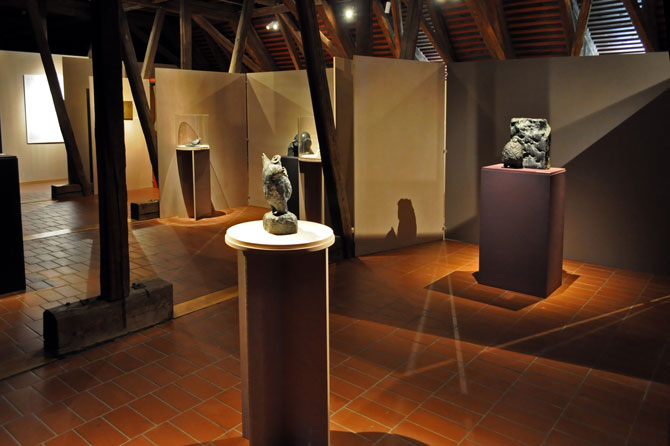
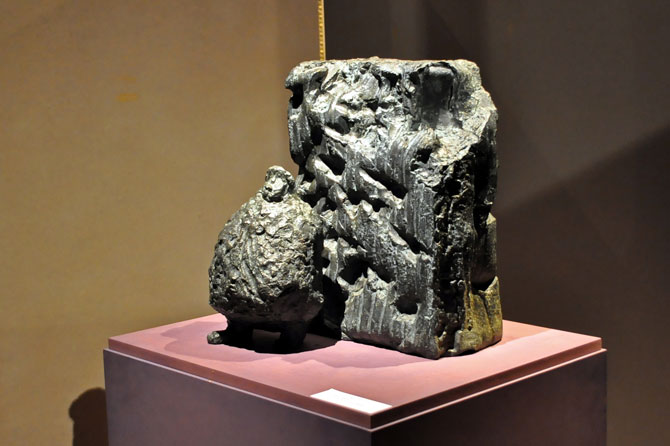
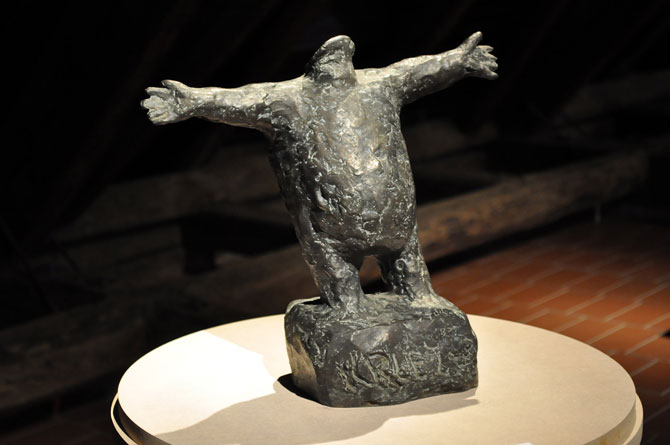
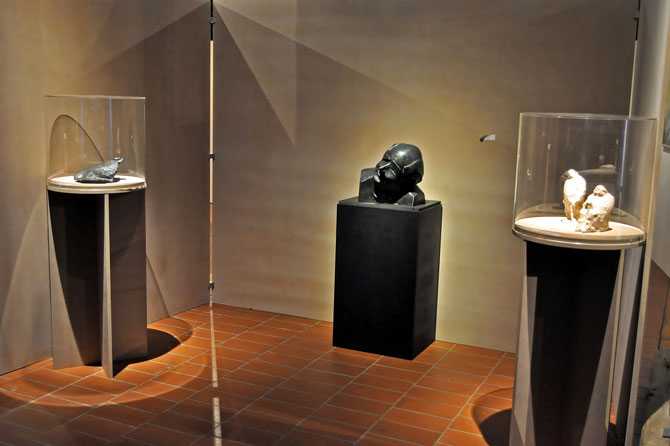
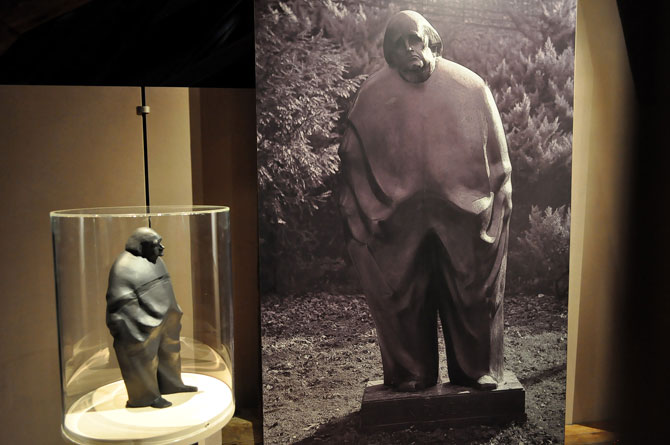

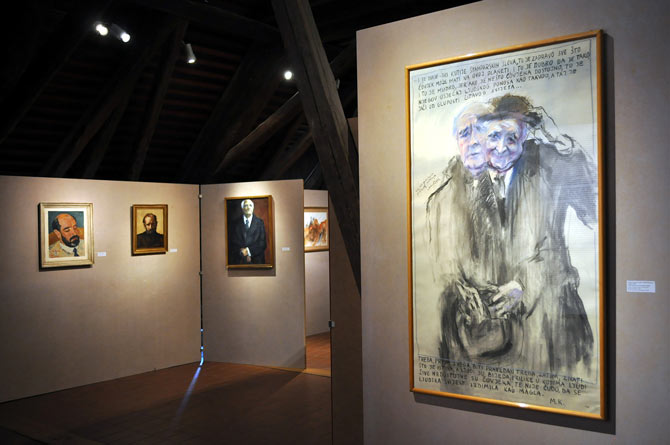

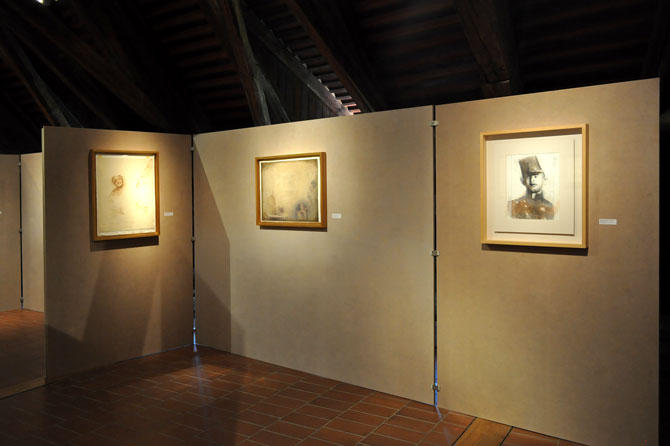
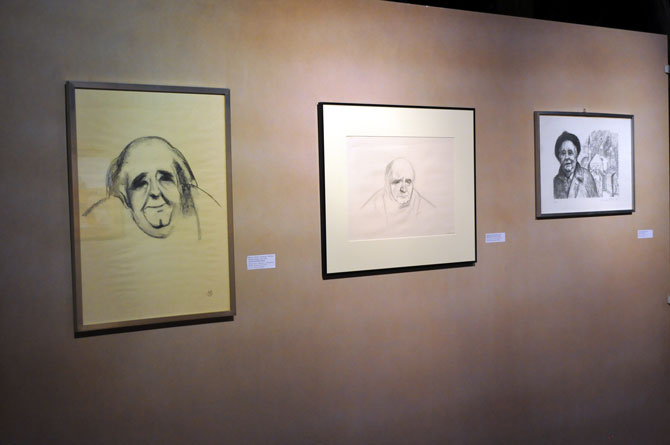
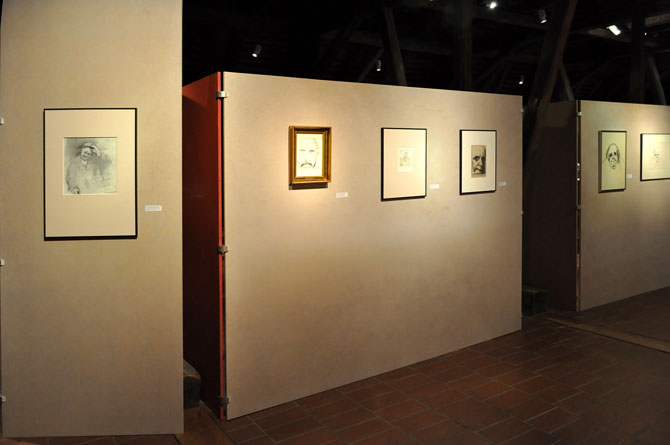

photo Miljenko Gregl, ZCM
 Exhibition catalogue
Exhibition catalogue
Maković, Zvonko; Vesna Vrabec. Portraits of Miroslav Krleža : On the 120th Birth Anniversary.
Zagreb : Zagreb City Museum, 2013

